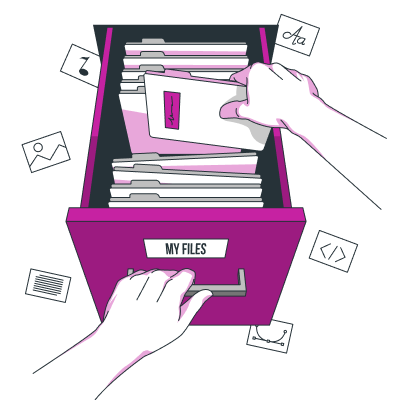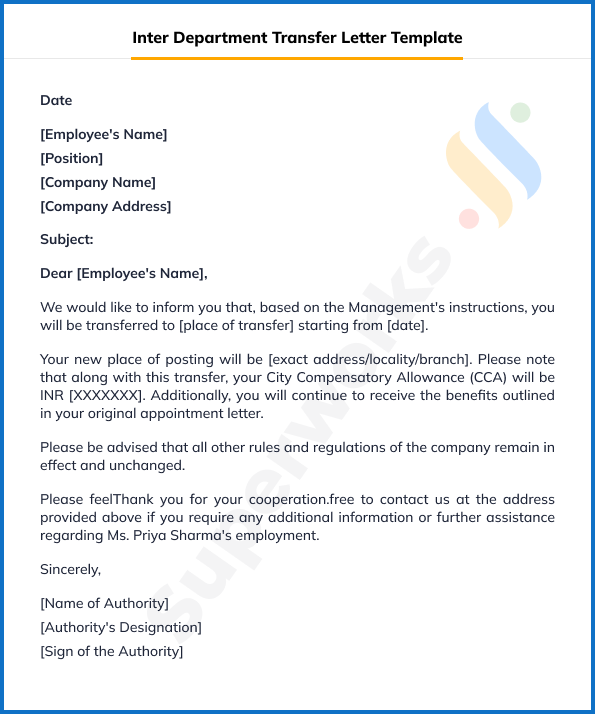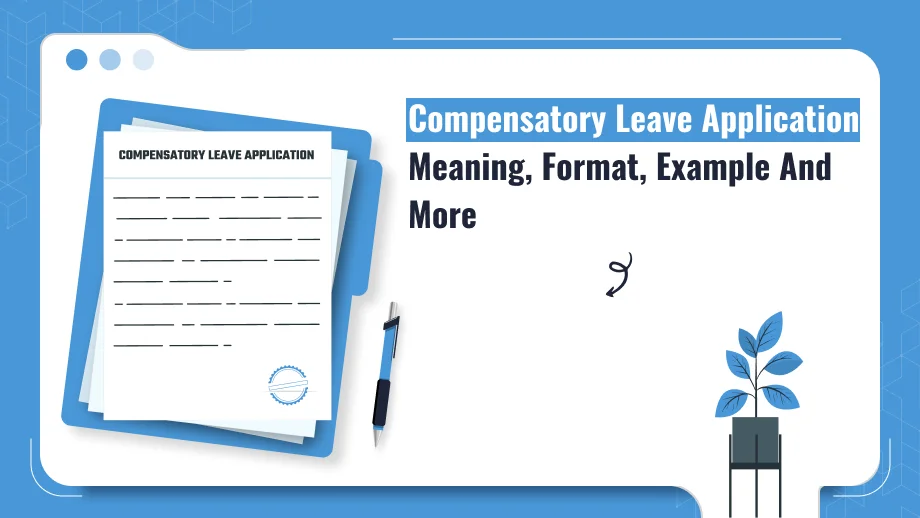Grab a chance to avail 6 Months of Performance Module for FREE
Book a free demo session & learn more about it!
-
Will customized solution for your needs
-
Empowering users with user-friendly features
-
Driving success across diverse industries, everywhere.
Grab a chance to avail 6 Months of Performance Module for FREE
Book a free demo session & learn more about it!
Superworks
Modern HR Workplace
Your Partner in the entire Employee Life Cycle
From recruitment to retirement manage every stage of employee lifecycle with ease.


Seamless onboarding & offboarding
Automated compliance & payroll
Track performance & engagement
5 Ws 1 H of Inter Department Transfer Letter Format – Get FREE Template!
- transfer of department letter sample
- 12 min read
- July 25, 2023

Have you ever wondered how organizations effectively manage internal transfers between departments? The strategic practice of transferring employees is a common approach adopted by companies to foster employee engagement.
As an organization, when you find the need to relocate an employee to a different department for various reasons, it becomes essential to draft an inter department transfer letter format. This letter serves as a formal communication channel to inform and seek approval from the concerned employee.
In this blog, we will guide you through the process of writing a compelling and professional change of department request letter, ensuring a smooth transition for both the employee and the organization.
Note:You can download directly from here and edit as per your need.
- What is an Inter Department Transfer Letter Format?
- Who Issues an Inter Department Transfer Letter?
- Why do HR Managers Use an Inter Department Transfer Letter?
- When to Initiate an Inter Department Transfer Letter: Timing Matters!
- Where Can You Find an Inter Department Transfer Letter Templates?
- How to Write an Inter Department Transfer Letter The Right Way?
- 1. Be Courteous From the Very Beginning:
- 2. Let Them Know the Purpose:
- 3. Provide Employee & Department Details:
- 4. Do Not Forget to Justify the Transfer:
- 5. Highlight the Employee’s Qualifications & Contributions:
- 6. Mention the Effective Date:
- 7. Address Potential Concerns or Issues:
- 8. Express Gratitude & Cooperation:
- 9. Provide Contact Details:
- 10. End with a Professional Closing:
- An Inter Department Transfer Letter Template
- Parting Thoughts
What is an Inter Department Transfer Letter Format?
First things first, organizations internally transfer employees within departments of the same designation to optimize talent utilization as well as promote career advancement.
An inter department transfer letter format is a standardized structure or template used to compose a formal letter requesting the transfer of an employee from one department to another within an organization. This letter serves as a crucial document that facilitates internal mobility and promotes efficient resource allocation.
The inter department transfer letter format typically includes essential details such as the employee’s name, current department, desired department, reasons for the transfer, effective date, and any additional information deemed necessary.
By following a predefined format for employee internal transfer letter to another department, organizations ensure consistency and clarity in their communication, enabling smooth transitions and effective management of personnel within different departments.
Who Issues an Inter Department Transfer Letter?
An inter department transfer letter format is typically issued by the Human Resources (HR) department or authorized personnel within the organization. The HR department is responsible for managing employee movements and facilitating transfers between departments.
When an employee expresses the desire or needs to transfer to a different department, they usually submit a formal request to the HR department.
Upon reviewing the request and assessing its feasibility, HR personnel issue the inter department transfer letter format to formalize the transfer process.
The letter of transfer to another department serves as an official document that outlines the employee’s transfer details, including the current and desired department, effective date, and any other pertinent information related to the transfer.
Why do HR Managers Use an Inter Department Transfer Letter?
To be honest, there are numerous reasons but here are the top ones you must know:
1. Formal Documentation:
One of the key reasons why HR professionals write an inter department transfer performance report format and provide formal documentation of the inter departmental transfers.
The department transfer letter to employees serves as a tangible record that captures the details of the transfer, including the employee’s current department, desired department, effective date, and any pertinent information related to the transfer process.
By documenting the transfer in writing, the HR department ensures that there is an official record of the employee’s movement between departments. This formal documentation not only serves as evidence of the transfer but also assists in maintaining accurate personnel records and facilitates future reference or verification if needed.
2. Communication and Clarity:
Another important reason for HR professionals to write an inter department transfer letter is to ensure effective communication and clarity throughout the transfer process. Although the same applies to almost all business letters such as behavioural warning letters.
The letter for transfer department serves as a means of transparent communication between the HR department, the employee, and the relevant departments involved in the transfer.
By outlining the specific details of the transfer, such as the effective date, departments involved, and any special conditions, the letter eliminates any confusion or ambiguity regarding the employee’s movement.
It also provides a clear understanding of the transfer for all parties involved, enabling them to align their expectations, responsibilities, and necessary actions to facilitate a smooth transition. This promotes transparency, minimizes misunderstandings, and fosters a positive and informed transfer experience for the employee and the organization.
3. Compliance & Policy Adherence:
Maintaining compliance with organizational policies and adhering to established procedures is a crucial aspect of HR management.
Writing an inter department transfer letter format helps HR professionals ensure that the transfer aligns with company policies and regulations. By documenting the transfer in a formal letter, HR ensures that the process follows the prescribed guidelines and procedures set by the organization. This includes considerations such as eligibility criteria, internal transfer protocols, and any legal or contractual obligations.
The letter serves as a means of validating that the transfer has been conducted in accordance with the increment policy, thereby mitigating potential risks and ensuring a consistent and compliant approach to internal employee movements.
4. Authorization & Approval:
The inter department transfer letter plays a crucial role in obtaining authorization and approval for the employee’s transfer.
HR professionals issue the letter as an official endorsement of the transfer, indicating that it has been reviewed and approved by the appropriate authorities. This formal document ensures that the relevant stakeholders, including the employee, HR department, and respective department heads, are aware of and acknowledge the transfer. It serves as a tangible record of the authorized movement, providing the necessary approval for the employee to transition from one department to another.
By obtaining proper authorization through the inter department transfer letter, HR ensures that the transfer is conducted in accordance with the organization’s hierarchy and decision-making processes.
5. Documentation of Employee’s Responsibilities:
An inter department transfer letter serves as a tool to document and communicate the employee’s new roles and responsibilities in the transferred department. The letter outlines the specific tasks, functions, and reporting structure that the employee will undertake in their new position.
By clearly stating the expectations and duties in writing, the transfer letter helps both the employee and the receiving department understand the scope of the employee’s responsibilities after the transfer. This documentation ensures that there is a shared understanding of the employee’s job functions, enabling seamless integration into the new department and facilitating a smooth transition in terms of workload, expectations, and performance evaluation.
Overall, HR professionals write an inter department transfer letter to facilitate a smooth and well-documented transfer process while ensuring compliance with policies, effective communication, and clarity for all parties involved.
Read More – This Promotion Letter Format Will Impress Your Employees!
When to Initiate an Inter Department Transfer Letter: Timing Matters!
Initiating an inter department transfer letter should be done at the appropriate time to ensure a smooth transition and minimize disruption within the organization. The timing of initiating the letter depends on several factors:
1. Employee’s Notice:
When initiating an inter department transfer letter format, it is important to consider whether the employee has provided advance notice of their intention to transfer.
If the employee has communicated their desire to move to a different department, it is advisable to initiate the letter promptly after receiving their request just like relieving letters.
This allows for efficient processing of the transfer and ensures that the employee’s expectations are addressed in a timely manner. Promptly initiating the letter also demonstrates the organization’s responsiveness to the employee’s needs and helps maintain a positive employee experience throughout the transfer process.
2. Internal Procedures:
Initiating an inter department transfer letter should align with the internal procedures and guidelines of the organization.
Each organization may have specific timelines and protocols in place for handling transfers. It is crucial to adhere to these internal procedures when initiating the letter. This ensures consistency and compliance with organizational policies, streamlining the transfer process.
By following the established procedures, HR professionals can ensure that the necessary approvals, reviews, and documentation are obtained in a systematic manner, facilitating a smooth and efficient transfer for the employee and the organization as a whole.
3. Consideration of Workload:
When initiating an inter department transfer letter, it is essential to consider the workload of both the employee’s current department and the desired department. Timing the transfer letter when both departments can accommodate the transition without significant disruption is important.
By assessing the workload, deadlines, and ongoing projects in each department, HR professionals can select an appropriate time to initiate the letter. This ensures that the transfer does not burden either department excessively and allows for a seamless transition of responsibilities, minimizing any negative impact on productivity and ensuring a smooth transfer process for all parties involved.
4. Coordination with Stakeholders:
When initiating an inter department transfer letter, it is crucial to coordinate with relevant stakeholders involved in the transfer process. This includes department heads, supervisors, and HR personnel. By aligning with their availability and involvement, HR professionals can ensure that the transfer is smoothly executed and that all necessary parties are informed and prepared.
Coordinating with stakeholders allows for a comprehensive understanding of the implications and requirements of the transfer, facilitating effective communication, collaboration, and support throughout the transition. This collaboration ensures that the transfer is well-coordinated and minimizes any potential disruptions or misunderstandings during the process.
By carefully considering these factors and initiating the inter department transfer letter at the appropriate time, organizations can facilitate a seamless and well-planned transition for the transferring employee and the departments involved.
Read More – Craft a Compelling Salary Increment Letter

Want smart templates for HR letters? Your problem is solved!
Try Superworks’ HR toolkit which is mindfully built to cater to businesses of all types and sizes. With our comprehensive HR toolkit, no HR manager will ever waste time on the Internet searching for samples & templates for business letters.
Save more than 80% of your time by downloading the HR toolkit for FREE!
Where Can You Find an Inter Department Transfer Letter Templates?
There is no dearth of templates and samples for inter department transfer letters available on the Internet. Many websites, document-sharing platforms, and HR resource portals offer a variety of templates that can be accessed and downloaded for free. These templates can serve as a starting point for crafting your own transfer letter, saving you time and effort in formatting and structuring the document.
For those seeking easily customizable, ready-to-use, and professional templates for inter departmental transfer letters and other business correspondence, the Superworks HR toolkit comes highly recommended. Benefit from a wealth of resources tailored to your needs, allowing you to streamline the process efficiently and effectively.
– But, What’s Superwork HR Toolkit?
Superworks, a top-notch HRMS Software in India, provides a comprehensive HR toolkit that caters specifically to HR managers and businesses, providing a wide range of HR templates, emails, and documents.
Experience the power of the Superworks HR toolkit and unlock a treasure trove of over 100 meticulously crafted templates, including the highly effective internal department transfer letter format. Our cutting-edge toolkit caters specifically to HR professionals, providing unparalleled convenience and time-saving benefits. Elevate your correspondence with a touch of brilliance as our templates exude intelligence and professionalism, making your communications truly stand out.
Unlock a world of streamlined HR processes, enhanced efficiency, and consistent HR communications with the invaluable Superworks HR toolkit. This empowering resource ensures seamless creation of effective interdepartmental transfer letters and other vital agile hrms documents, fostering a highly productive and well-organized HR environment.
How to Write an Inter Department Transfer Letter The Right Way?
Writing an effective inter department transfer letter format or a letter request for transfer to another department involves following a structured approach.
Let’s look at some of the key steps you should be mindful about:
1. Be Courteous From the Very Beginning:
Address the letter to the recipient using a professional salutation. Say, for instance, “Dear [Recipient’s Name].”
2. Let Them Know the Purpose:
Clearly state the purpose of your letter, which is to request an inter department transfer for a specific employee.
3. Provide Employee & Department Details:
The third step is to ensure to furnish essential employee as well as department details, including the employee’s full name, his or her current department, designation, and the department he or she intends to transfer to.
4. Do Not Forget to Justify the Transfer:
State the factors driving the employee’s aspiration for the transfer, which may include career advancement, upskilling, or a more aligned utilization of their expertise.
5. Highlight the Employee’s Qualifications & Contributions:
Emphasize the employee’s exceptional qualifications, skills, and accomplishments, which make him or her the ideal individual for the new department. Emphasize how his or her transfer will bring mutual advantages, equally benefiting both the employee and the organization.
6. Mention the Effective Date:
Let them know the proposed effective date for the transfer with utmost clarity. Plus, make certain that it gives the employee ample time for all arrangements to be effortlessly made.
7. Address Potential Concerns or Issues:
Address any potential concerns or issues associated with the transfer, including its impact on ongoing projects or the requirement for training in the new department. Present viable solutions or mitigation strategies to alleviate these concerns effectively.
8. Express Gratitude & Cooperation:
Extend sincere appreciation for the employee’s valuable contributions to his or her current department. In addition to this, cooperate as well as provide support throughout the transfer process.
9. Provide Contact Details:
Including contact details in the letter encourages open communication, builds trust, and supports employees during the transfer process. Easy access to the sender’s phone number or email fosters engagement, ensures prompt resolutions to concerns and shows consideration for employees’ needs. It creates a positive experience and facilitates a seamless transition for both the employee and the organization.
10. End with a Professional Closing:
Use a formal closing, such as “Sincerely” or “Best regards,” followed by your name and job title.
Remember to proofread the letter for any grammatical or spelling errors before sending it. A well-crafted inter department transfer letter format ensures clarity, professionalism, and a smooth transition for the employee and the organization. Now, it’s time to give a smart transfer of department letter sample to you!
An Inter Department Transfer Letter Template
Parting Thoughts
Achieving seamless interdepartmental transfers begins with mastering the 5 Ws and 1 H of inter department transfer letter format. By understanding the Who, What, When, Where, Why, and How of it, we hope you can now pave the way for efficient collaboration, streamlined processes, and a culture of excellence.
So, are you ready to make the most of a well-crafted transfer letter, unlock inter-departmental synergy, and propel your business toward success?













